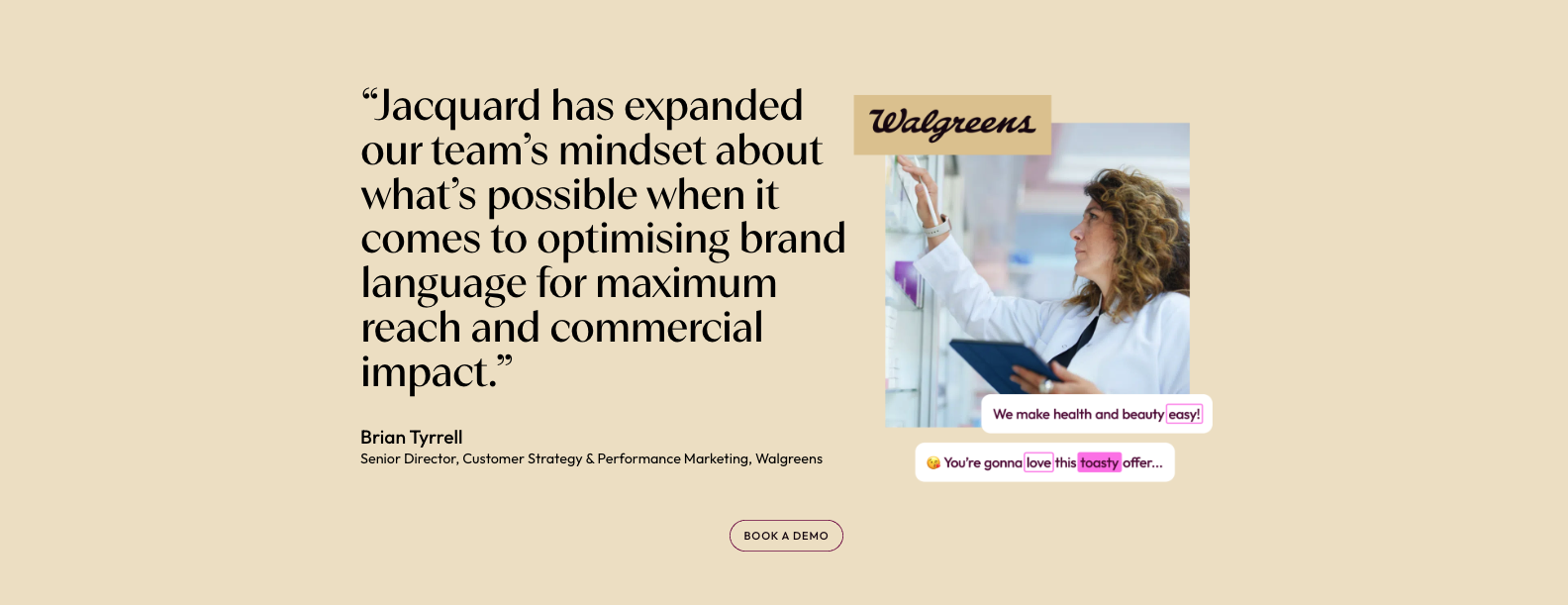JacquardPrompt Engineering.
Language Tool
Employer
Jacquard
Senior Product Designer
Role

As part of a strategic initiative to enhance personalisation at scale, I led the design of the Prompt Engineering Language Tool, aimed at empowering the Language Team to generate, manage, and approve high-quality personalised language with minimal manual input.
This tool was critical to supporting Jacquard’s Northstar goal: to build scalable infrastructure towards a fully automated service, while delivering actionable, user-guided interfaces for internal teams.

Collaboration
Partnered with engineers to ensure technical feasibility and seamless implementation.
Cross-functional: Worked closely with Product Owners, Engineers, and Language Specialists across multiple epics to ensure a cohesive experience.
Leadership: Partnered with senior stakeholders (PMs, and Tech Leads) to define requirements, refine success metrics, and maintain alignment on product goals.
Technical Partnerships: Engaged engineering teams early to ensure technical feasibility and scalability, particularly around dynamic prompt generation and approval flows.
Results
Successfully launched the internal Language Tool within the project timelines of 6 months.
Delivered a scalable design framework that could support 20+ customers using personalisation, 60+ ongoing campaigns, 6,000,000+ variants reviewed.
Higher open and click rates for personalised variants vs. non-personalised ones.
A Prompts & Variables Management System for scalable language generation.
A Language Approval Tool for fast, streamlined variant validation, 75% of recommended combinations were deemed relevant by users.
25% of prompt templates required no re-editing after generation, showing high output quality.
Key challenges included
Designing a system that could dynamically generate and approve thousands of language variants at scale.
Creating intuitive interfaces for complex tasks such as prompt/variable management without overwhelming users.
Managing dependencies across four major epics with interlinked functionalities while keeping timelines on track.
Ensuring a balance between human creativity and machine-driven personalisation logic.


Research and Discovery
Conducted stakeholder interviews to gather detailed requirements for each epic.
Analysed workflows from manual language generation to identify key pain points and automation opportunities.
Benchmarked internal processes against industry best practices in personalisation and language tooling.


Design and Iteration
Designed wireframes using existing components and high-fidelity prototypes in Figma, aligned to the scalability goals outlined in the project Northstar.
Created user flows for major functionalities including recommendation engines, prompt/variable management, generation interfaces, and approval workflows.
Collaborated with PMs and engineers through regular design critiques, sprint reviews, and technical refinement sessions.


Validation and Testing
Conducted usability testing sessions to validate assumptions around personalised language creation.
Conducted feedback review sessions using example POC’s from customers like Adidas to validate our approach with real projects.
Iterated designs based on feedback from internal users to optimise for speed, clarity, and scalability.


This 6 month project demonstrated how effective cross-functional collaboration and fast, iterative design can deliver high-impact internal tools within tight timelines. By deeply understanding user needs and prioritising scalability from the start, we built a system that balanced automation with human oversight. The project strengthened our internal design processes for tool-building, and highlighted how even complex, technical workflows can be made intuitive and user-friendly when approached with a clear, structured UX strategy.





